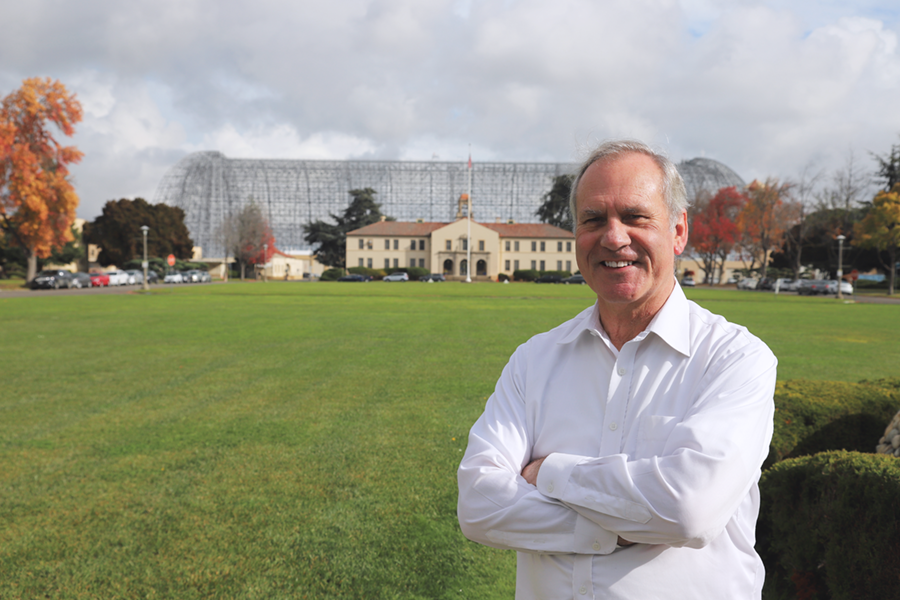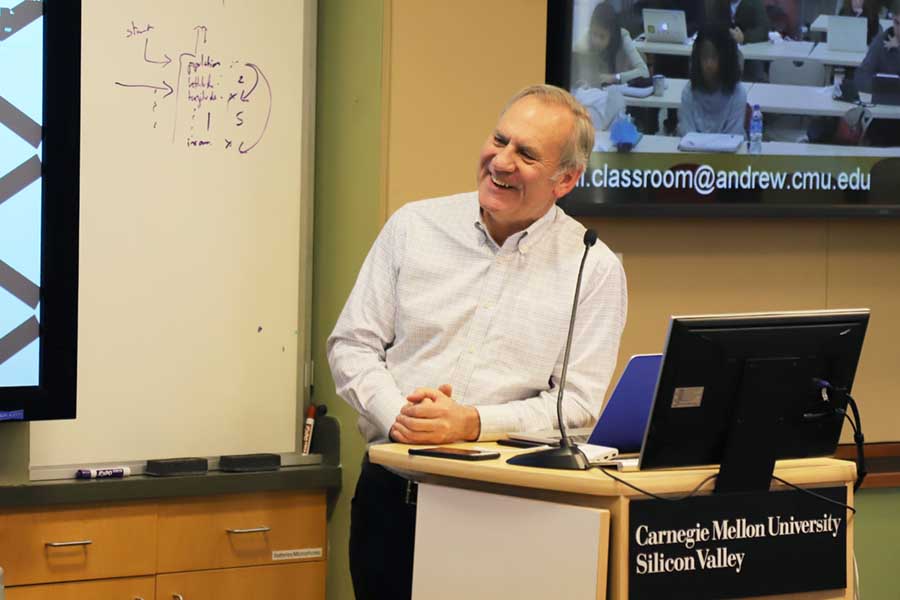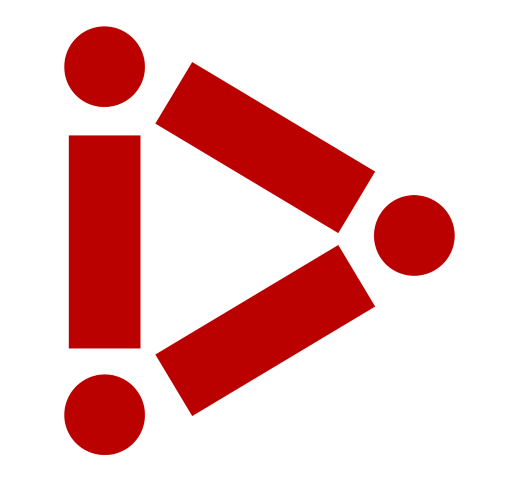
Dr. Stuart Evans: Digitally Transforming the Future
By Elizabeth Donaldson
As the Integrated Innovation Institute celebrates its fifth anniversary, faculty share what's next in their field of expertise. Dr. Stuart Evans, Distinguished Service Professor and Director of CMU-Emirates iLab, explores how digital transformation is changing business, leadership and the future.
Q: What is digital transformation?
A: Digital transformation is the adoption of new and emerging technologies by traditional organizations. This is impacting the very essence of how organizations operate. The current focal point is the replacement or upgrading of existing “legacy” IT backbone; as we move forward it will entail the restructuring of the entire enterprise. The journey is continuous, not a step functional, episodic change.
Q: What’s been the evolution of digital transformation?
A: The notion of digital transformation emerged several years ago, driven by the paranoia that traditional industries would be disrupted by start-ups. In parallel, the SMAC stack, as it became known (Social, Mobile, Analytics, and Cloud) forced firms to upgrade their legacy IT infrastructure. Amazon transformed retail, Uber taxi services, and AirBnB the hotel industry. Google began experimenting with autonomous vehicles. CMU was pioneering new approaches to robotics, artificial intelligence and machine learning.
Since then, digital transformation has progressed through several phases. After the initial concern around disruption faded, the focus shifted to leveraging “big data”, i.e. how to use massive amounts of information on customers, suppliers, and operations to improve efficiency and increase sales. Data Lakes were created accordingly. Next came artificial intelligence and machine learning to generate insights from the data.
Traditional companies want to use a combination of these new technologies to hyper-personalize interactions with customers, and mimic what digital-native companies like Amazon, Uber, and AirBnB have been doing since they were founded: the goal is to enable customers to do everything online, learn what they are doing, and offer personalized suggestions and recommendations.
As large companies have experimented by applying machine learning techniques, they’ve also discovered that their data isn’t quite strong enough; it is dispersed in different parts of legacy IT systems, and the data is structured in different formats, so it can’t be used seamlessly. Currently, digital transformation in many companies is focused on creating different ways of gathering and storing data so they can put new technologies to good use. The next phase will be driven by Edge Computing, IoT, and 5G technologies.
In December, Dr. Stuart Evans received the 2018 Flexibility Excellence Award from the Global Institute of Flexible Systems Management and presented a history of digital transformation and its findings
Q: How do you prepare future professionals to work at digitally transforming companies?
A: Today the focus in many companies has shifted to training and up-skilling employees on the job and that's heavily attuned to the way we teach at the Institute. Our students learn by being involved in real projects, working alongside domain experts to apply what they learn to concrete business challenges. For example, in our Innovation and Entrepreneurship class, we work with a corporate sponsor that’s interested in a specific area; students evaluate how emerging technologies may impact that field and make actionable recommendations. The success of many projects has been the result of moving away from proof-of-concepts and towards rapid testing and putting ideas into production quickly, where there can be business impact up-front. Several of the projects we’ve been working on with our corporate sponsor, Emirates, have focused on projects sponsored by senior leaders from different business units.
Q: What kind of projects are students working on to engage with digital transformation?
A: A: Right now, we're working on a data science project. Twenty students are looking at data, and applying machine-learning algorithms to that data; the goal is to build status dashboards and generate conversational business intelligence. We're also working on a number of learning initiatives. If employees are not able to embrace and understand new technologies quickly and actively, they’re not able to drive innovations. Our students in Pittsburgh are approaching this problem by understanding how emerging learning technologies can be used to up-skill and developing expertise quickly. The goal is to accelerate targeted learning, catalyze innovation, and improve execution in the process.
Q: Five years from now, which industries will be most noticeably changed by digital transformations?
A: Travel will change considerably. For example, airport security will become a lot more sophisticated and seamless with the use of real-time data; the automobile industry will also be very different. 5G is about to be unleashed as a new cell network and it has a latency of one to two milliseconds. With 5G, the time it takes to apply brakes in a car is reduced from around seven seconds to two seconds, so there will be major safety benefits. The computer industry will change as we move toward “edge”, so compute is next to the point of data production, and as we transition from dedicated devices towards ubiquitous “remnant” computing. This will create so much data that it’s not going to be possible to send data back to a storage device, either in the cloud or on the premises; you have to process that data in situ, real-time. A new secure architecture will inevitably emerge.
Q: What advice do you have for professionals as they prepare to lead or participate in digital transformations?
A: Business is the story of adaptation and evolution. In Silicon Valley’s Darwinian ecosystem, the waves of adaptation are hyper-accelerated. Since the early 1980s, this ecosystem has gone through several waves of disruptive technologies. Our observations from witnessing these successive waves of disruptive cycles point to 3 modes of adaptation: Forced adaptation, as is commonly observed in crisis situations; Accidental adaptation, when timing and luck are critical determinants of success; Deliberate adaptation, as is the case with many disruptive innovators and pioneers. Historically, forced adaptation has been most common; we typically adapt only when we have to, and, as the saying goes, necessity is the mother of invention. Simply put, we adapt when we have no choice. The problem is that when our back is against the wall, our options are somewhat limited. Well-known examples of companies that left it too late to adapt include Kodak, Nokia, and Blockbuster.
Accidental adaptation is about being at the right place at the right time. It’s partly about timing and luck. Amazon is known as the pioneer of cloud computing. But its leaders did not intentionally set out to launch the cloud; the goal was to monetize excess capacity, installed to cope with peak seasonal shopping periods. What do you do with excess capacity during normal times? Why not rent it to enterprise customers that need it? That was a key trigger that led to the inception of “cloud computing”. Today, AWS (Amazon Web Services) is a dominant player in the cloud space. Slack is another famous case in point. The team set out to develop a video game and created project management tools for their distributed team. The video game never materialized but Slack is still growing exponentially.
Deliberate adaptation is the prized capability in today’s fluid world. It is about driving, shaping and pioneering, rather than responding and reacting. The most successful companies of the digital era have deliberately set out to disrupt the status quo. Think of Steve Jobs and “technology for the rest of us," revolutionizing how technology can be intuitive and simple to use; or Google’s maxim “digitizing the world’s information;" be it Maps, Search, autonomous cars, or health information. Reed Hastings, Netflix’s founder, had the vision of eventually streaming video content through the Internet, although during the early days, the company mailed DVDs to its customers. Disruptive innovators of the modern era have deliberately and intentionally set out to change the status quo. As the famous saying goes “the best way to predict the future is to invent it.”
My advice to students is learn from disruptive innovators and entrepreneurs; don’t wait for a crisis; be intentional and deliberate. Think about your interests and passions, and the digital technologies that excite you. Find learning experiences and work opportunities that match your interests; do your due diligence, generate options, and pick the one that is a close match, be it in a start-up or an established company. In the process, be flexible, learn and be willing to adapt. In a world of constant fluidity, you have to think like a driver, not a passenger.
Celebrating #CMUfiiive
The 2018-2019 academic year celebrates the fifth anniversary of the Integrated Innovation Institute as well as Carnegie Mellon University’s rich history as a pioneer of cross-disciplinary education and innovation.
